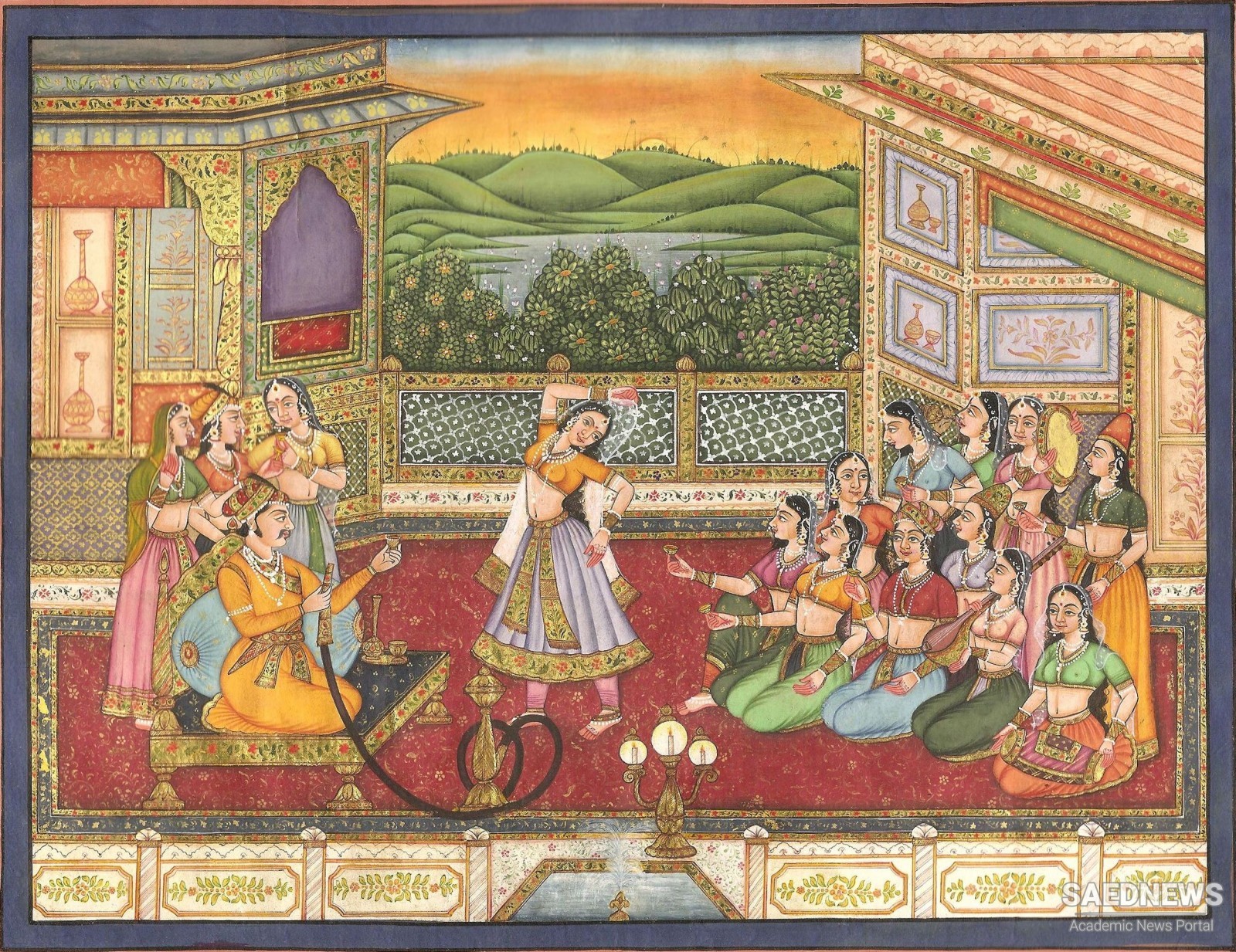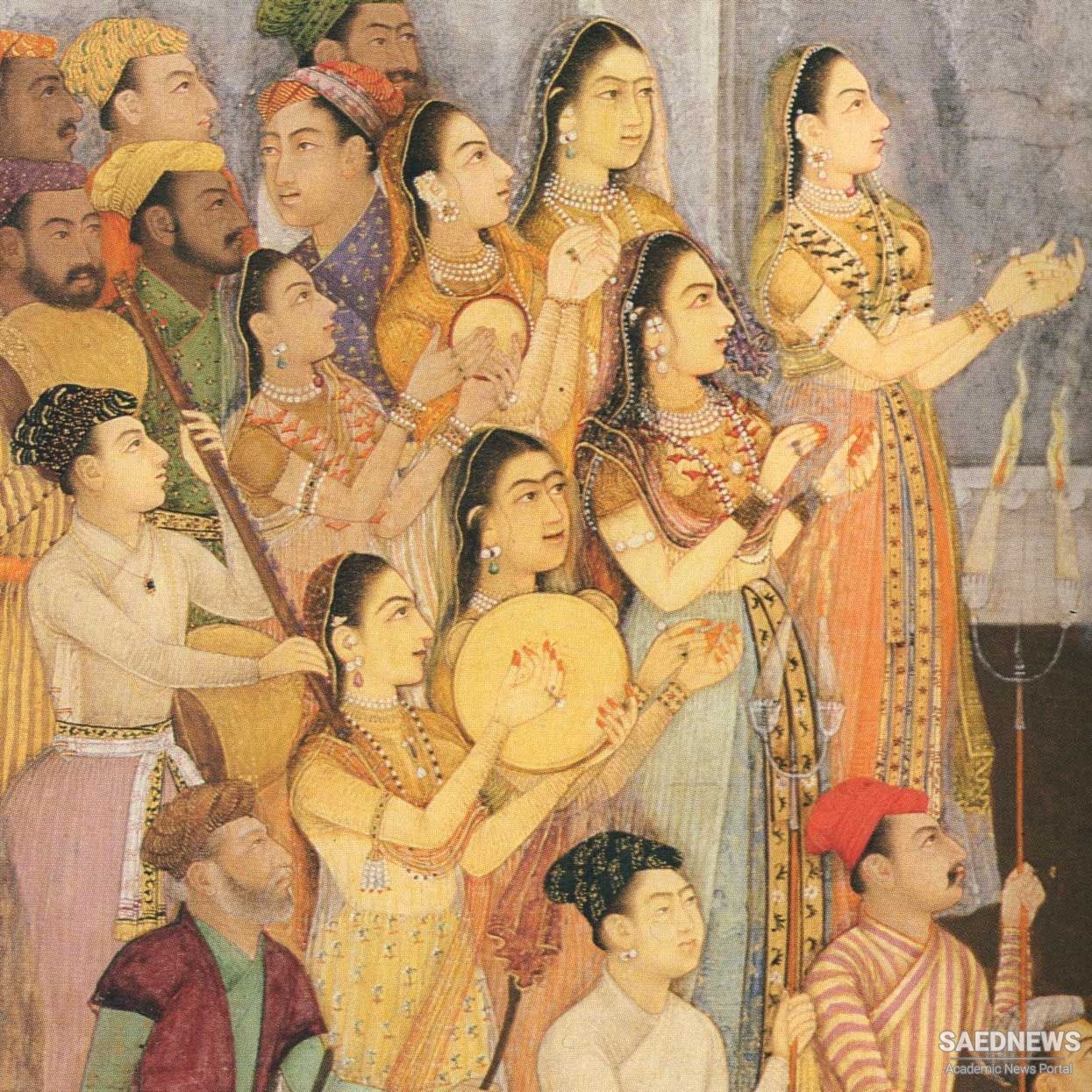The sources for accounts of music during the Safavid and early Qajar periods are remarkably sparse. Henry Farmer, in his detailed history of Persian music, mentions these source peculiarities—the lack of native histories and treatises—but he seems to gloss over this apparent decline in music. For example, he quotes three treatises "probably" from the sixteenth century, but does not explain their sudden anonymity. Another trend that he recounts but does not rationalize is the sudden reappearance of "defenses" of music during the seventeenth century. But despite Safavid politics, Persian music was still brilliant during this period—not in Persia but in India. The Mogul emperors, descendants of Tamerlane who ruled North India until they supplanted by the British, brought their culture with them from Central Asia. Although the Moguls themselves were Turks, their courtly culture was Persian, and Persian was the language of diplomacy and literature.The best-known examples of this cultural transplantation are the many Persian-style buildings in India, among them the Taj Mahal, and the numerous miniature paintings in a Persian style produced in India. Accounts of music from this period show that as in the other arts, Persian influence was considerable. Abu Fazl, court chronicler to the important Mogul monarch Akbar (r. 1556-1605), mentions several Persians in his list of court musicians. He also gives an extensive account of the nagareh khaneh at Delhi (Source: Classic Persian Music).



 Safavid Persia and Growth of Conservative Notions of Music
Safavid Persia and Growth of Conservative Notions of Music














































